
Decrease Your Time, Increase Your Power, and You’ll Never Again Be Tempted to Skip Leg Day!
By now, we all know that for optimal health, we should get 150 minutes of moderate exercise per week and two weekly sessions of weight training. For many of us, it can sound daunting to fit all that into our busy lives. And while the guidelines for that 150 minutes of exercise are pretty specific (moderate = 50–70% of your maximum heart rate, you should be able to talk but not sing), the concept of two weekly sessions of weight training is pretty vague.
So, we are going to clarify things with some expert advice on how to get maximum results from your weight training sessions with minimum time commitment and little experience. In this article, we’ll look at “leg day,” otherwise known as strengthening exercises for your legs. In a few weeks, we’ll tackle a simple but powerful upper-body workout.
The “leg day” concept comes from those who put so much energy and time into their weight training that they can’t get it all done in one session. So, they divide their exercises into two separate sessions: leg day and upper body day. Dedicated bodybuilders alternate between leg and upper body daily workouts since our muscles require at least a day of rest between weight training workouts.
For many of us, leg and upper body days will be the same day, at least at the start. But strengthening your legs offers an entirely different set of benefits than strengthening your upper body:
- Balance and Coordination: Leg workouts enhance balance and coordination by strengthening our stabilizer muscles, which are essential for everyday activities. Strong legs make daily tasks like walking, climbing stairs, and lifting easier.
- Calorie Burn: Leg muscles are some of the largest in the body. Working these muscles requires more energy, leading to a higher calorie burn both during and after workouts, contributing to fat loss.
- Increased Hormone Production: Intense leg exercises can stimulate the release of growth hormones and testosterone, which aid in muscle growth and recovery throughout the body.
- Endurance: Leg workouts build stamina, improving your ability to sustain physical activity over time.
- Correct Posture: Strong leg muscles, especially in the glutes and hamstrings, support proper posture by preventing pelvic tilt and lower back strain.
- Reduced Injury Risk: Strengthening the legs, particularly the quads, hamstrings, and calves, helps protect joints like the knees and ankles, reducing the likelihood of injuries during any physical activity.
Your powerful but efficient leg workout has to strengthen four major muscle groups.
- Quadriceps: The muscles on the front of your thighs, involved in movements like squats and lunges.
- Hamstrings: The muscles on the back of your thighs, engaged in exercises like lunges and leg curls.
- Glutes: Your buttock muscles, which play a significant role in many lower body movements.
- Calves: The muscles on the back of your lower legs, important for activities like walking and climbing stairs.
You Don’t Need a Gym!
If you don’t have access to a gym, you can get a terrific leg workout without equipment. Home workouts provide great convenience, allowing you to squeeze in a session whenever you have time. Bodyweight exercises like squats and lunges are excellent for building strength and stability without any equipment. The adaptability of home workouts is a significant advantage. You can easily tailor them to match your fitness level, adding household items or investing in a few dumbbells or kettlebells as you progress.
Amaze fitness expert Cire Ba recommends the following short but powerful home workout.
- Bodyweight Squats – 3 sets of 15 reps
- Walking Lunges – 3 sets of 12 reps per leg
- Glute Bridges – 3 sets of 20 reps
- Calf Raises – 3 sets of 15 reps
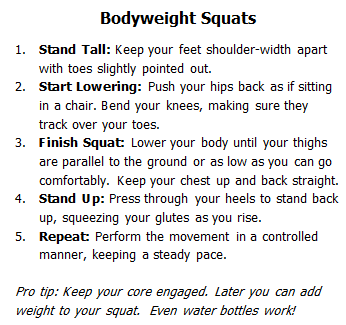
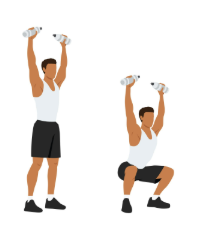

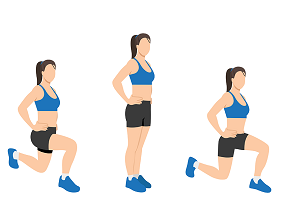
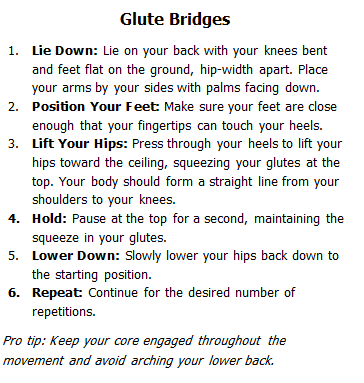
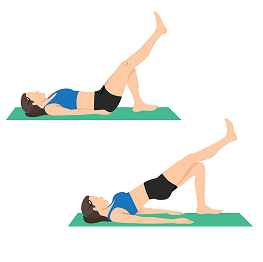
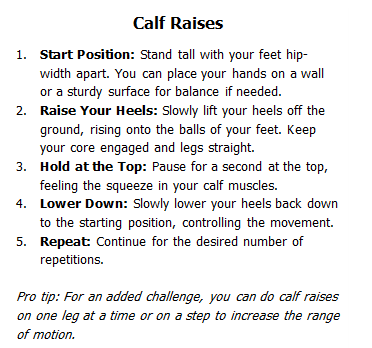
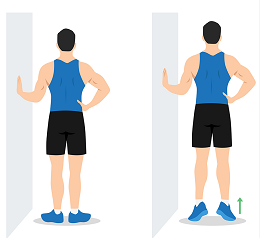
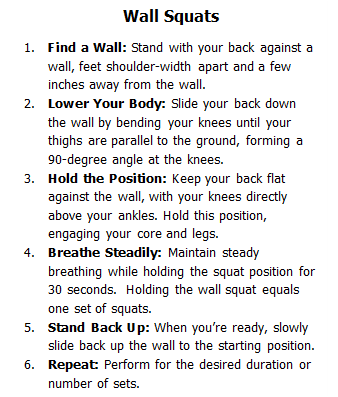
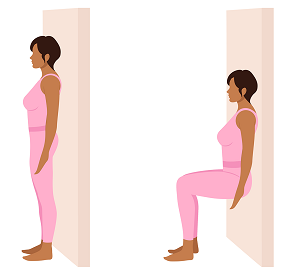
Proper form is crucial, especially when working out alone. Use mirrors or record yourself to ensure you’re performing exercises correctly to avoid injury. Squats offer a big fitness payoff and the biggest form challenges. You want to make sure that you don’t squat too low or pitch your bodyweight too far forward. Otherwise, you risk injuring your knees and your ankles. In a squat, your thighs should be parallel to the floor with your knees close to a 90° angle.
Squats are also hard on your knees, especially if you already have knee issues. Wall squats are a terrific alternative. They offer the same benefits and put less pressure on your knees.

But if You Want to Be a Gym Rat…
Cire says this workout can be replicated using gym equipment, which may offer some benefits, especially to beginners and those looking to increase their leg strength steadily. “Keeping good form during your workouts is crucial for avoiding injuries and getting the most out of your exercises. Using machines like the leg press can really help with this. They’re designed to put you in the perfect position to avoid guessing if you’re doing it right. This means you’re more likely to target the right muscles and stay safe while seeing terrific results.”
Another benefit of using gym equipment is that the ability to ramp up each exercise is built right into each piece of equipment. You can adjust the weight load as your body adjusts to the exercise without worrying about buying weights or finding increasingly heavy household items.
At the gym, Cire advises that the same efficient but powerful leg workout looks like this:
- Leg Press – 4 sets of 12 reps
- Leg Curls – 3 sets of 15 reps
- Leg Extensions – 3 sets of 12 reps
- Standing Calf Raises – 4 sets of 20 reps
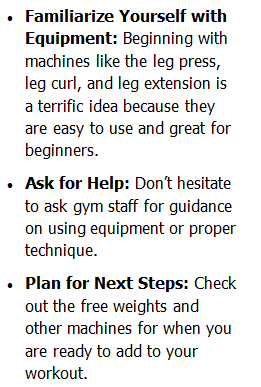
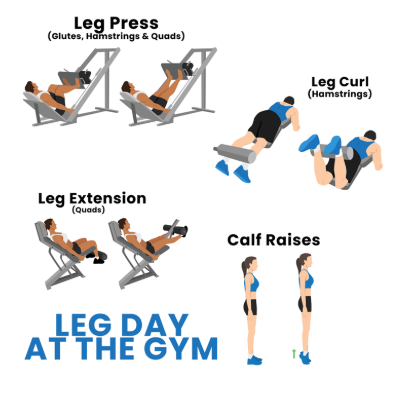
A Few More Words from Amaze Fitness Expert, Cire Ba
We hope you have been inspired to start or upgrade your leg weight-training program either at home or at the gym, or both. The tiny but mighty workouts described above will certainly help you achieve your health and fitness goals. But our fitness expert has a few important words of advice.
- Proper form is crucial during leg day to avoid injuries, especially with exercises like squats, where poor technique can put stress on your knees, hips, and lower back. Focus on maintaining a neutral spine, keeping your knees aligned with your toes, and engaging your core throughout the movements. You can see Cire demonstrate proper form for a variety of weight-bearing exercises at (link).
- It’s important to balance your workouts between the front and back of your legs to avoid muscular imbalances, which can lead to poor posture or injury. So, a series of quad exercises should be followed by exercises that target your hamstrings.
- Recovery is key because the muscles involved in leg day are large and require a lot of energy. This often leads to muscle soreness a day or two after your workout. Ensuring proper recovery through rest, hydration, nutrition, and sometimes light stretching or foam rolling is crucial to avoid overtraining and injury.
- Good workouts need good stretches. Good hip, knee, and ankle mobility can improve your form and effectiveness during leg day exercises. Incorporating dynamic stretches or yoga can help enhance your range of motion and prevent stiffness.
- Your legs need progressive overload to grow stronger. This means gradually increasing the weight, reps, or intensity of your exercises over time to continue challenging your muscles.
- Listen to your body! It will tell you when to add weight to your workout and it will tell you when you need a break. If you’re consistently able to complete your target number of repetitions with good form and feel like you could easily do a few more, it’s a sign that you need to add weight. If you’re not feeling any muscle fatigue or challenge by the end of your set, it’s a clear sign that you need to add or increase weight. By contrast, if you’re feeling extremely fatigued or if you have any joint pain, it might be a sign to scale back or adjust your workout to prevent injury.
The Bottom Line
Leg day is a vital part of a comprehensive fitness routine, helping to build strength, power, and endurance in your lower body. Plus, strong legs contribute to overall athletic performance, better balance, and even improved metabolism. But you can’t make leg day a habit unless you start small to ensure that you can do it consistently. Try one of the mini but mighty workouts above, either at home or at the gym. And you may find yourself looking forward to leg day!